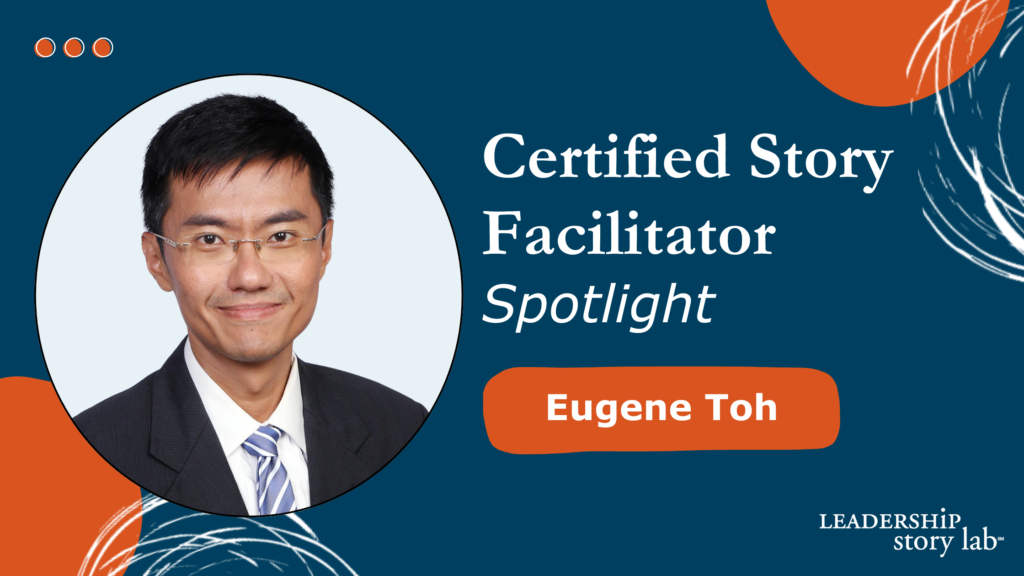September 7, 2018 / Esther Choy
Industrialized countries throw out about $680 billion worth of food each year, and this waste releases the greenhouse gas methane while it rots. Many organizations, like the consumer goods company Unilever, are working to find solutions to address the “monster” of food waste.
When Unilever learned that nearly 400 million pounds of pumpkins go to landfills after every Halloween, they decided to battle the food waste monster. They partnered with the food charity Hubbub to educate consumers about how to use their Halloween pumpkins for food. They even raised awareness through a #PumpkinRescue hashtag.
Do you or your organization have stories of how you are helping to overcome crises like this one?
Maybe you have powerful examples of how your founders, employees, or clients have dealt with and overcome a difficult personal situation. These are stories that will inspire and motivate your customers, investors, or donors.
An Easy Story Template to Get Started
When you’ve put in the hard work of battling a significant problem, it might encourage you to know that the story of your experience can have a massive impact. There is a template that you can easily apply to set up your story most effectively for your audience.
This story arc is the “overcoming the monster” plot structure, one of five classic plots that are most effective in business contexts. (For a template for one of the other classic plots, see “Leadership Is Hard; Crafting Origin Stories Shouldn’t Be–Here’s How.” My book, Let The Story Do The Work, covers all five.)
To tell your “overcoming the monster” story, follow this simple template:
- Set the scene – what was a normal day like before the challenge?
- Introduce the day everything changed – what was the overwhelming challenge?
- Recount your initial reactions (lost, hurt, confused, apathetic, etc.).
- Describe the moment you decided to embrace the challenge – explain what (or who) convinced you to tackle this problem.
- Outline the beginning of your journey – what was the first step?
- Describe your setbacks and rebounds, leading up to the final moment of confronting the “monster” once and for all.
- Reflect on what you learned from your battle with the monster.
- Connect to why this matters to your audience today – what do you want them to take away or how should they act?
An Important Consideration
While it is important to introduce the scariness of the “monster,” keep in mind that it’s a tactic that can backfire. If the “monster” triggers your audience’s anxiety, they may cling all the more strongly to their current beliefs or find even stronger motivation to do things that bolster their self-esteem–even when those are the very things that feed the monster! For instance, social psychologist Jochim Hansen and his colleagues found that when smokers see death-related messages about smoking, they actually think even more positively about smoking! The thought of death makes them look for a way to feel good about themselves, and smoking provides just that.
It’s important to bring out the scary monster so people are aware and alert, but you can’t leave people in fear. If you’ve battled the monster but haven’t won the war, you may want to consider one of the other four plot options.
An Overcoming the Monster Example
In his book, Eyes Wide Open, entrepreneur Isaac Lidsky frames his life story as a powerful “overcoming the monster” plot. Check out how he follows this story template.
Set the scene: “Normal” life for young Isaac Lidsky was a day on a TV set. When he was six months old, he was in a diaper commercial, followed by 150 other commercials, and when he was 13 he started playing Weasel on the sitcom Saved by the Bell: The New Class. He was well known, getting interviewed, and giving autographs.
Introduce the day everything changed: At 13, Lidsky was diagnosed with a disease that would make him blind by the time he was 25. As he puts it in his 2016 TED talk: “My sight became an increasingly bizarre carnival funhouse hall of mirrors and illusions.”
Recount your initial reactions: At first, he felt that blindness was “a death sentence for my independence… the end of achievement.” Knowing his sight would get progressively worse, he felt “desperate” to pack in as many accomplishments as he could before it was too late. He graduated from Harvard at 19, founded a tech business, returned to Harvard for law school, and eventually served as a law clerk for Sandra Day O’Connor and Ruth Bader Ginsburg. But with all that, he still hadn’t faced the big challenge–overcoming his fear.
Describe the moment you decided to embrace the challenge: Eventually, Lidsky came to a crossroads where two ways of understanding reality converged. He realized he could either “persist in the reality of my fear or choose to create a better one for myself.”
Outline the beginning of your journey: Blindness led Lidsky to think about how sight is not actually reality itself but something the brain constructs for us. By pondering and challenging his own view of reality, he saw that his fears were not always realistic and did not have to define him.
Describe your setbacks and rebounds, leading up to the confrontation: It took years for Lidsky to confront the lies that “disability is weakness… dependence is insecurity… struggle is embarrassment.” Finally, he was able to accept, embrace, and even find strength in his blindness. Embracing and finding strength led him to “escape” his life as a successful attorney and take a chance on buying and reinvigorating a construction company. Facing his fears paid off: ODC construction, now one of the largest construction firms in Orlando, is known for “excellence and innovation,” says Lidsky.
Reflect on what you learned: “For me,” says Lidsky, “going blind was a profound blessing, because blindness gave me vision.”
Connect to why this matters to your audience today: When it comes to seeing our fears for what they usually are–fictions–Lidsky tells his TED audience, “I hope you can see what I see.”
Why This Story Form Works
How does an “overcoming the monster” story connect with audiences? The answer is how people relate best to a problem. If the problem is framed within the sense of big numbers, it’s hard for people feel anything. However, if they hear a story of an individual who’s facing the problem, then all of a sudden they can relate, and once they relate, they have a higher likelihood of acting on what you say.
Alan Weiss, author of Million Dollar Consulting, said it best: “Logic makes you think. Emotion makes you act.” The point of using the “overcoming the monster” plot is to inspire your audience to act and to work together with you. Together, you will be able to continue to fight the battles and change the world for the better.
Related Articles
Leadership Is Hard; Crafting Origin Stories Shouldn’t Be — Here’s How
Been An Underdog? Tell That Story In Your Next Presentation
If you want to learn more about choosing the right plot for the business story you need to tell, contact us for business storytelling training! Leadership Story Lab trains and coaches managers in storytelling techniques to help them become more engaging and persuasive communicators. We can help you stand out in the interview process, add punch to a presentation, or make a compelling case for a new initiative. Schedule a complimentary session with us today!
Esther’s new book, Let the Story Do the Work (published by HarperCollins Leadership), is now available!
This article first appeared on Forbes.com as part two in my series “5 Basic Plots for Leadership Storytelling.” Read parts one and three.
Better Every Story
Leadership Transformation through Storytelling
"This is an amazing and insightful post! I hadn’t thought of that so you broadened my perspective. I always appreciate your insight!" - Dan B.
Get Esther Choy’s insights, best practices and examples of great storytelling to your inbox each month.




